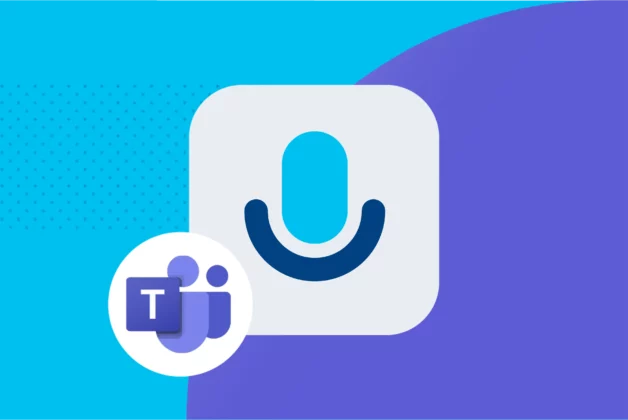Every dialled digit tells a story. About productivity, budgets, and phone usage. If you’ve ever worked at a contact center, you know that metrics are only the beginning of Microsoft Teams call reporting. The real challenge? Making sense of them.
My first encounter with Microsoft Teams call reporting felt less like data analysis and more like a scavenger hunt. I wasn’t even sure what I was looking for, just clicking through data until I stumbled onto something that looked like an answer… I think?
In this post, we’ll demystify Teams call reporting: what it is, why it matters, and how to turn cryptic charts and call logs into insights that actually help your team work smarter.
What is Microsoft Teams Call Reporting?
Microsoft Teams call reporting is essentially the process of tracking and analyzing phone usage within your organization’s Teams environment, concerning both internal and external calls. Think of it as your organization’s phone bill breakdown, but with way more detail and insight.
At its core, Teams call reporting captures three main areas: who’s making calls, how much it’s costing, and how well Teams is being adopted across your company.
How do I get complete call reporting within Teams?
Microsoft Teams brings chat, video, and calling together in one place, but when it comes to call analytics, the picture isn’t always complete – you need a 3rd party call analytics solution for that.
Your Microsoft Teams environment generates hundreds of data points every day that go far beyond basic call statistics. But it won’t automatically show you how many callers are on hold, when abandonment rates peak, or how often calls are being transferred. Yet this kind of insight is essential. Not just for delivering great customer service, but for making informed, real-time decisions that keep your operations running smoothly.
Modern Teams call analytics solutions provide powerful reporting, search, and filtering tools that make this data actually usable. Instead of drowning in spreadsheets, you get quick access to meaningful insights.
The real value comes from understanding patterns. Are certain departments making more external calls than others? Is call quality suffering in specific locations? How much is your organization actually spending on Teams Phone System usage? These questions become answerable when you have proper reporting in place.
What I’ve learned is that call reporting isn’t just about numbers on a screen. It’s about understanding how your organization communicates, where money is being spent, and whether your Teams investment is actually paying off. The data tells a story – you just need to know how to read it.
Related content
- Turn Microsoft Teams into a Contact Center
- Call Recording: Adding Compliance to MS Teams Contact Centers
- Teams Call Recording in 2025: a guide by Imagicle
Is Teams Call Reporting worth it?
You’ve probably stared at those call analytics dashboards before. Average call time: 4.2 minutes. Answer rate: 87%. First call resolution: 72%. The numbers look decent enough, but something still feels off about your team’s performance or about the money you’re spending. That’s because these surface-level metrics barely tell half the story.
Think about it this way: knowing your average call time is like knowing the average temperature in your city. It doesn’t tell you when the heat waves hit or when those unexpected cold snaps catch everyone off guard.
Efficient Teams call analytics goes beyond simple call logs: it can reveal the true cost of your communication. By breaking down usage by department, user, or region, you can spot trends in spending, identify unusually high-cost calls, and evaluate whether your current licensing or calling plan actually fits your organization’s needs. Without this visibility, it’s easy to overspend or misallocate resources.
Microsoft Teams call reporting also helps uncover how your phone system is actually being used. Are calls frequently dropped? Are customers spending too much time on hold? Are agents transferring calls more than resolving them? These usage patterns can point to technical issues, training gaps, or process inefficiencies that might otherwise go unnoticed until they affect customer experience.
Finally, reporting is essential for measuring adoption. You’ve invested in Microsoft Teams, but are people really using it as their primary phone solution? Reporting tools let you track who’s embracing the system and who’s sticking with old habits. This insight can guide targeted training, improve user experience, and ensure your investment in Teams is delivering value across the organization.
Last, but not least, there’s real gold in real-time call data. In a contact center, what happened a week ago is a thing of the past. You need to know what’s happening now.
Imagicle Teams Call Analytics: From Metrics to Meaning in a Click
Research shows that organizations using comprehensive Microsoft Teams call reporting see measurable improvements in customer satisfaction scores. But the real transformation happens when you stop thinking about metrics as endpoints and start seeing them as starting points for better conversations.
Imagicle Call Analytics makes Teams more than just a messaging platform. It becomes a strategic asset.
A Pre-Configured Set of Reports
Getting started with Imagicle’s Microsoft Teams call reporting doesn’t mean building everything from scratch. With a library of pre-configured reports at your fingertips, 50+ to be exact, you can dive straight into insights that matter like Call Monitor, Incoming Calls Analysis, Cost, Group Department, Cost Centre, and more. These ready-to-use reports help you quickly spot trends and take action without the usual setup hassle.
Multi-Level Aggregation
For teams that need to dig deeper, multi-level aggregation adds an extra layer of flexibility. You can break down data across different dimensions—such as by user, department, or location—and visualize it through graphs and tables. Whether you’re troubleshooting a spike in call transfers or tracking performance by team, this advanced capability makes complex analysis much more manageable.
Customizable with Filters
Not all reporting needs are the same, which is why powerful filtering options are essential. Imagicle Call Analytics allows you to set filters across a wide range of criteria—traffic type, time range, call type, time zone, and more. Save filtered views as reusable public or personal reports, making it easy to surface exactly what you need without reinventing the wheel each time.
Free Templates
Need a quick, professional report? Use one of the free built-in templates. These templates are designed for ad-hoc analysis and come pre-loaded with useful aggregations, so you can generate insights quickly. You can even customize them with your company’s branding, including logos, to create polished reports that are ready to share with leadership or stakeholders.
Once your reports are ready, you can export, schedule, send reports directly via email. Or even get alarm notifications upon selected conditions and monitoring periods (some examples include calls outside working hours, to specific numbers, most expensive extensions, and more).
Final Thoughts: From Call Logs to Clear Insights
Call reporting in Microsoft Teams isn’t just a technical add-on, it’s a strategic necessity. In a world where communication drives productivity, customer satisfaction, and cost efficiency, understanding how your organization uses Teams calls is vital.
Without the right tools, you’re left guessing. With the right call analytics solution, you’re empowered. You can pinpoint inefficiencies, uncover cost-saving opportunities, improve service levels, and guide smarter decision-making. It’s about turning raw call data into something much more valuable: clarity.
Imagicle Teams Call Analytics bridges the gap between complex data and clear insight. With ready-to-use reports, deep customization, and smart filtering, it transforms Teams into a powerful driver of operational excellence. Whether you’re managing a contact center or supporting hybrid work, these insights give you the visibility you need, when and where you need it.
Because in the end, every dialed digit really does tell a story. Make sure you’re listening to the right one.
You might also be interested in…
-
Products Blog
Enhancing Microsoft Teams with the new ACS-based Attendant Console
Enhancing Microsoft Teams with the new ACS-based Attendant ConsoleWe developed an ACS-based integration for our Attendant Console for Microsoft Teams. But what is ACS, and why is it a game changer? -
Download
Brochure BlogTransform Microsoft Teams into a Complete Communication Hub with Imagicle
Transform Microsoft Teams into a Complete Communication Hub with ImagicleDiscover how Imagicle apps turn Microsoft Teams into a fully-featured, compliant, intuitive enterprise communication solution. -
Products Blog
Call Analytics for Microsoft Teams. An even more powerful integration.
Call Analytics for Microsoft Teams. An even more powerful integration.Imagicle Call Analytics can now monitor external calls in both Direct Routing and Operator Connect modes. Discover more.
 Welcome
Welcome Automate
Automate Ensure
Ensure Analyze
Analyze Other
Other

 Fiamma Romano
Fiamma Romano